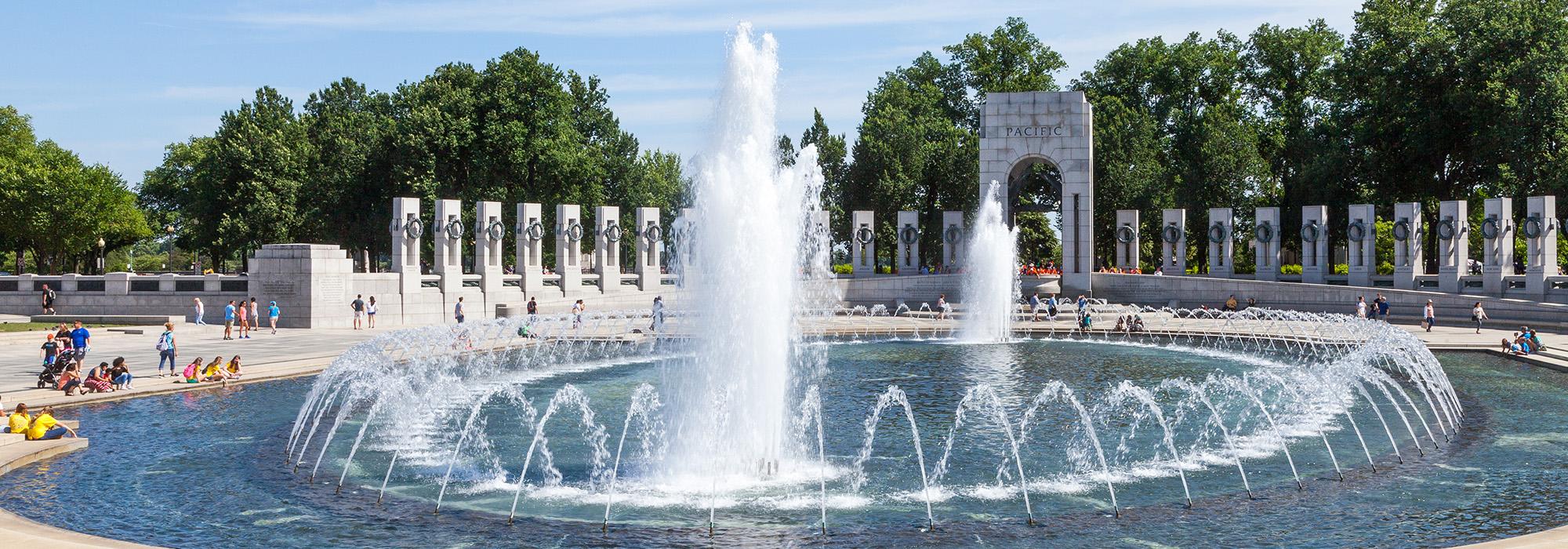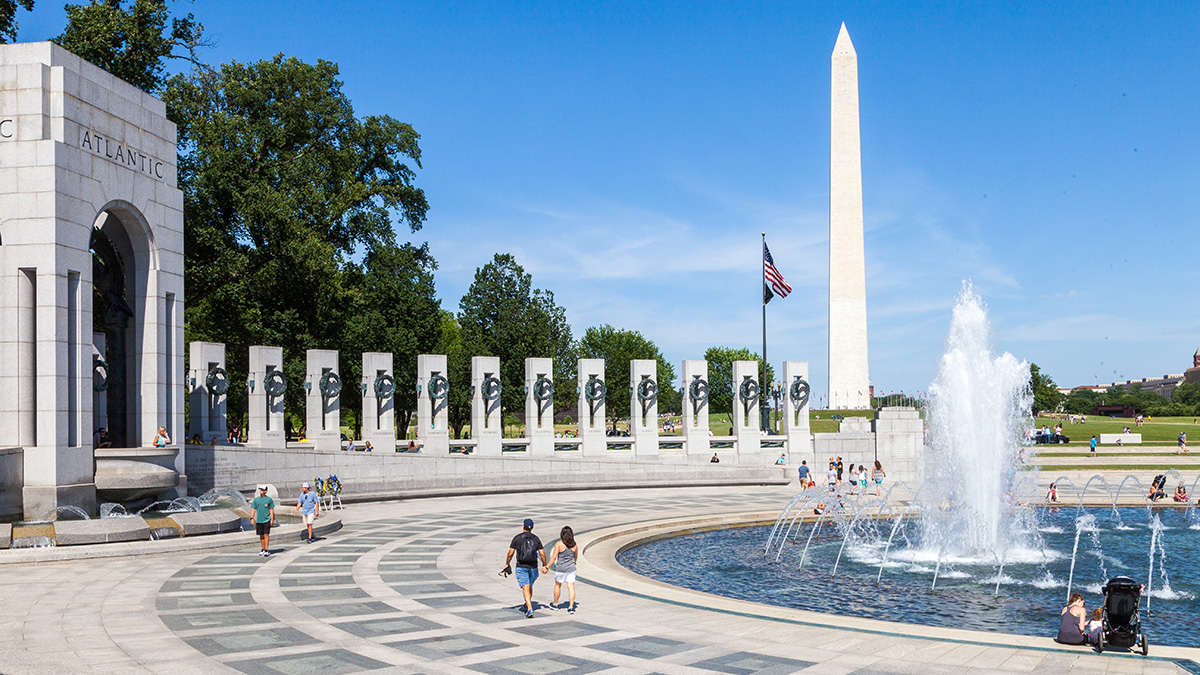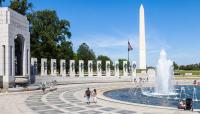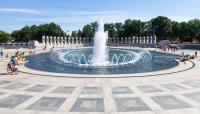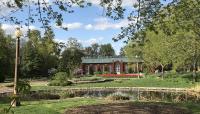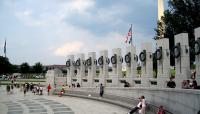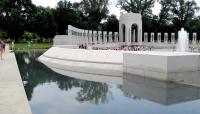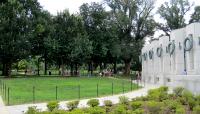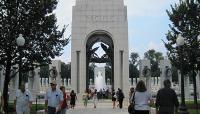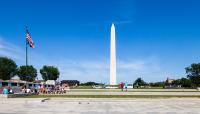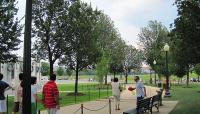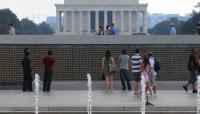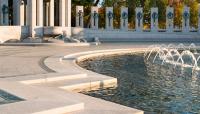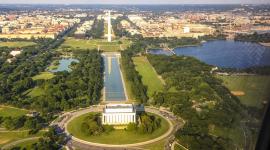Landscape Information
This 7.4-acre memorial occupies a central location along the axis of the National Mall. Designed by Friedrich St. Florian with Leo Daly, sculptor Raymond Kaskey, and Oehme, van Sweden & Associates, the memorial incorporates elements from the historic Rainbow Pool designed in 1912 by Henry Bacon and Frederick Law Olmsted, Jr. In 1989 the site was selected for a monument commemorating World War II, due to its position on axis between the Lincoln Memorial and Washington Monument. In 1993, President Clinton authorized the creation of the memorial which opened to the public in 2004.
The site’s sunken plaza and pool are accessed via arcing ramps passing beneath two 41-foot-tall arches representing the Atlantic and Pacific fronts, guiding visitors into the space from the north and south. From the east, the plaza is accessed via terraces flanked by 24 bronze bas-relief sculptures depicting war experiences. Adorned with bronze oak and wheat wreaths, 56 granite pillars surround the plaza. Bronze ropes link the columns, symbolizing the unity of U.S. states and territories during the war. The reconfigured Rainbow Pool, sharing the geometry of its predecessor but reduced in size by fifteen percent, is located in the center of the memorial and is animated with fountain jets. From the sunken area, the Freedom Wall to the west of the plaza symbolizes, with gold stars, American lives lost during the war. Flanking the Wall, water from the Lincoln Memorial Reflecting Pool cascades into the plaza via two waterfalls, pooling below the stars. Plantings expand outwards from the perimeter of the memorial, softening its edge and integrating the site into its surrounding park lands. Oehme, van Sweden limited the plant palette to white-flowering plants, such as magnolias and azaleas, in the spirit of remembrance.



